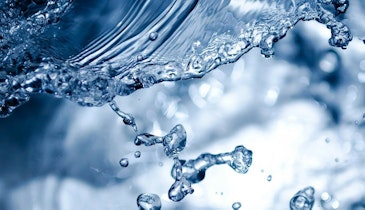
Interested in Engineering/Consulting?
Get Engineering/Consulting articles, news and videos right in your inbox! Sign up now.
Engineering/Consulting + Get AlertsJust off a busy downtown street, the California city of Anaheim operates a wastewater treatment plant. It’s a small plant, but along with other features of the Water Sustainability Campus next to city hall, it has a big impact.
Known as the Anaheim Water Recycling Demonstration Facility, the plant produces recycled water for toilet flushing in nearby buildings and for landscape irrigation. This drought-proof source of water helps Anaheim irrigate nearby municipal green spaces, even during times of restricted water use. The plant produces 100,000 gpd of recycled water.
The campus features, like drought-tolerant landscaping, permeable pavement and rainwater harvesting, also demonstrate to developers how to incorporate sustainable water features into their projects. The plant helps educate customers about water recycling and the reusability of water resources.
More than 2,000 people have toured the treatment plant since it opened in 2013. Many more have viewed the wastewater treatment process through the glass walls, following signs that describe what goes on inside.
Visible processes
“The way it’s set up with the piping, you can see the influent come in one clear glass pipe, and you can see the effluent coming out in another glass pipe,” says Michael Moore, assistant general manager for water services for Anaheim Public Utilities. “People can see how we make water pure, so we can use it again and again and again.”
The plant, designed by Stantec, receives wastewater diverted from a sewer headed toward the regional wastewater treatment plant. The wastewater goes through a perforated rotary drum screen (WesTech Engineering) and then to biological treatment tanks, first anaerobic and then aerobic.
The third step is a membrane filter (Dynatec Systems), followed by disinfection with ozone (Ozone Solutions) and UV light (TrojanUV). A little bit of chlorine is added to the effluent to prevent bacterial growth in the pipes or holding tanks. The effluent flows through a water feature designed into the building. Any solids collected in the process are diverted back to the sewer system, along with any surplus effluent not used for toilet flushing or irrigation.
An expansion project will soon provide plenty of demand for the recycled water. About 2,300 feet of pipe, a pump system and a storage tank are being installed so the facility can provide irrigation for Pearson Park, a highly used, 12-square-block site downtown.
One reasons Anaheim developed the $8 million Water Sustainability Campus was to show what could be done in an already developed urban area. “There are not very many of these decentralized or satellite recycled water plants — small-scale ones like this — especially in a downtown metropolitan area right next to city hall,” Moore says. “You can put these anywhere, in any urban area. That’s one of the big education points, whether its elementary school or college students or visitors from other countries who come to see this.”
No noise, no odor
The plant is very close to office buildings in downtown Anaheim, but there have been no complaints about noise or odor. “We’ve been able to contain everything within that building,” Moore says. “The building looks great. There’s no odor. There’s no noise coming out. It’s a great example of how you can create a sustainable water treatment plant in any urban area.”
Noise from aerators, blowers and compressors is controlled by the building’s thick glass walls and by having no ventilation outlets near the building. The exhaust goes over to a neighboring parking structure.
The demonstration plant is a valuable educational resource, Moore says. The effluent cascades down a water feature in the building. Visitors can touch it and even taste it, although the effluent is not rated as drinking water. “They can see it and touch it right there versus us trying to tell them through a brochure or something,” Moore says.
The other features of the Water Sustainability Campus are important, too. “We want to help promote sustainable growth in our city for future development,” Moore says. “We’re able to demonstrate to developers there are ways to do sustainable water practices in their projects. Maybe its drought-proof water, maybe its drought-tolerant landscaping, maybe it’s rainwater harvesting or porous pavement. All these things we’re doing, they could implement.”





